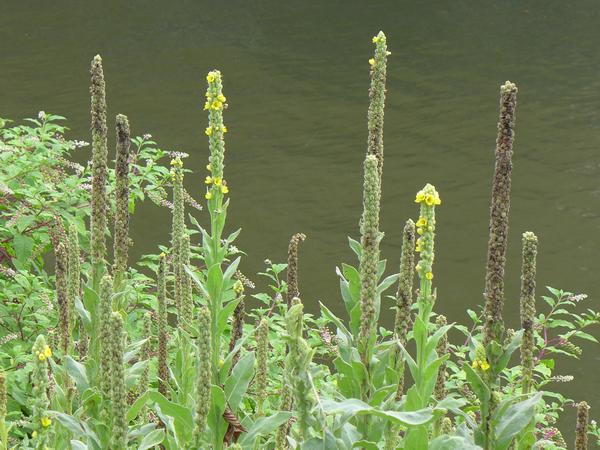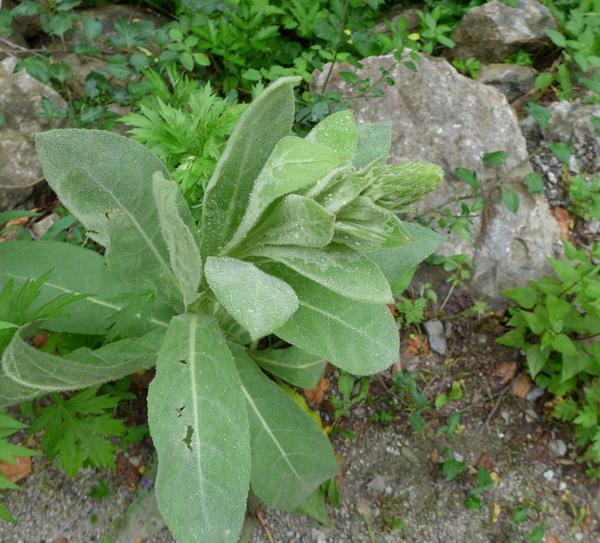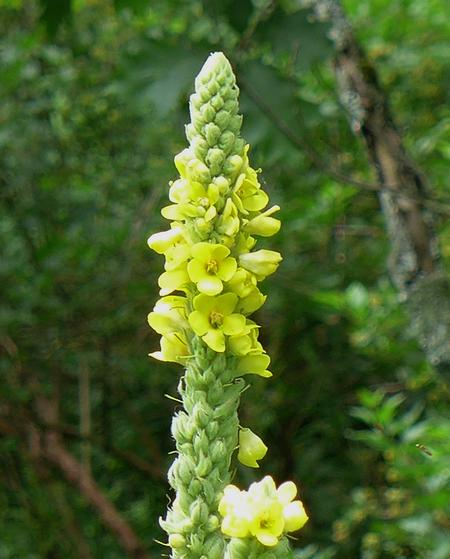
In July these green and yellow flower spikes tower along our roadsides and waste places.
Common mullein (Verbascum thapsus) is a Eurasian native of the figwort family (Scrophulariaceae) that was introduced to North America. Because it’s biennial both forms are visible right now.
In its first year of life, the plant is a basal rosette of velvety blue-green leaves, 4-16 inches long.
In its second year the rosette sprouts a flower spike, blooms in the summer, sets seed, and then dies.
Here it is in the spring of its second year. The basal rosette is beginning to flower.

And here’s a closeup of the flowers:

Though common mullein only reproduces by seed it’s very good at doing it. Each plant produces 100,000 to 180,000 seeds that are dispersed by wind or animals. If the seeds don’t land in a hospitable place, no problem. They’re viable for 100 years!
Consequently, common mullein is listed as invasive in 20 states including Pennsylvania, Ohio and West Virginia.
Because it only spreads by seed, this plant can be eradicated by hand pulling before the seed sets, then bagging it and disposing of it. Unfortunately, it’s too late in the season to do that now and other methods, such as poison, will only spread its seeds when the plant falls.
We’ll just have to enjoy its flowers and wait until next year.
When it comes to weeds, I love procrastinating!
(photos by Kate St.John)